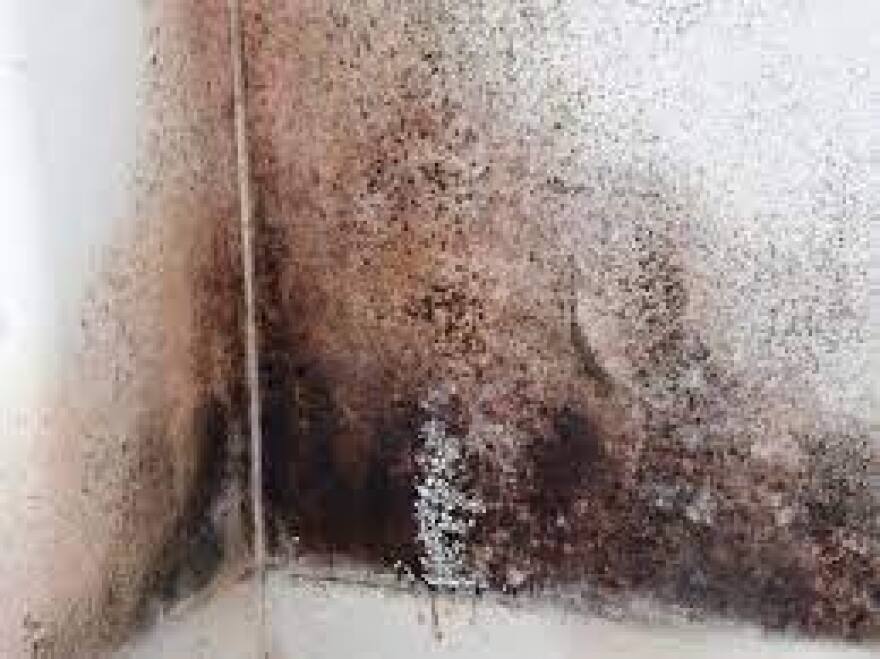In the immediate aftermath of a storm, the race is on to clear roads, collect debris, restore power and deliver food and water. But the window to prevent mold from growing in your home is tight, as short as a day, until the inhabitants in that home are at risk of invasive mold diseases (IMD).
Katherine Allen, a family and consumer sciences agent at the University of Florida extension office in Suwanee County, said not to waste time testing for mold in your home after a storm.
“If you can see it, if you can smell it, you have it,” said Allen.
If water damage to your home has been minimal and you can start the cleanup process quickly, Allen said to remove the moisture source as soon as possible by drying the area out, typically by treating the area with fans and cleaning agents. But after most storms, especially if flooding has occurred, residents are typically not able to jump to action so quickly or may not have the electricity to do so.
Unfortunately, Allen said anything wet for more than 24 hours needs to be thrown out and replaced. The Center for Disease Control’s official recommendation allows for a little more time, stating that anything wet for longer than 48 hours should be assumed to be infested with mold and replaced. That includes not only personal belongings and household goods, but furniture, insulation and drywall as well.
Once something is clearly infested with mold, it’s hard to be sure you’re completely rid of it.
“That’s the big problem,” Allen said, “even if you are able to kill the mold, mold spores may still remain and cause the mold to grow again.
As hard as it is, Allen urges people to think of flooding as an opportunity to “rebuild better” so that a flood won’t harm their homes and their health in the future.

It is critical not to ignore mold growth in your home. If left untreated, mold can lead to long-term health issues like wheezing, coughing and shortness of breath that may worsen over time. Those with asthma and allergies can be especially sensitive to mold. According to the CDC, some studies find that mold exposure in young children can lead them to develop asthma. In one study published in 2022, researchers at the CDC found that “mortality rates associated with IMD can exceed 50%, depending on the pathogen involved” and the patient.
Though the health risks of mold are well understood, its scale is not. The 2022 study concluded that more data collection is needed to better understand IMD and its trends. A spokesperson from the CDC’s office of communication said the CDC does not have surveillance data on increased mold in homes after hurricanes and other disasters. The CDC did find an increase of mold infestation cases following Hurricane Harvey in 2017, but the study is currently under journal consideration.
The CDC strongly urges caution if you choose to clean your home yourself. A guidebook published by the CDC recommend people cover their eyes with protective eyewear, mouth and nose with a respirator, and skin by wearing thick gloves. Children and those with compromised immune systems should not take part in the cleanup process.
If you choose to hire a mold remediation specialist instead, you should hire someone with credentials from the National Environmental Health Association (NEHA), the American Industrial Hygiene Association (AIHA), the Institute of Inspection, Cleaning and Restoration Certification (IICRC), or American Council for Accredited Certification (ACAC).
If you suspect your home has a mold infestation, there are steps you can take to reduce your exposure while it’s being repaired. Create a separate sleeping area and seal off the area of the home with mold using tarps and plastic sheeting. Don’t spread the mold; take off your shoes when walking to different parts of the house. Always shower and wash your hair before bed, and change your clothes if you spend time in the affected area. Don’t turn on your HVAC system until it has been inspected, as it could spread mold around the house.
The CDC recommends seeing your doctor as soon as possible if you think your health might be affected by mold. Allergists, infectious disease doctors, pulmonary doctors and occupational doctors may be able to treat you depending on the details of your case. Sometimes infections related to mold may be hard to spot, but are serious regardless.
“It all depends on your underlying conditions and your exposure,” Allen said, “you may have a lung infection while I have a runny nose.”
Copyright 2022 Storm Center.







